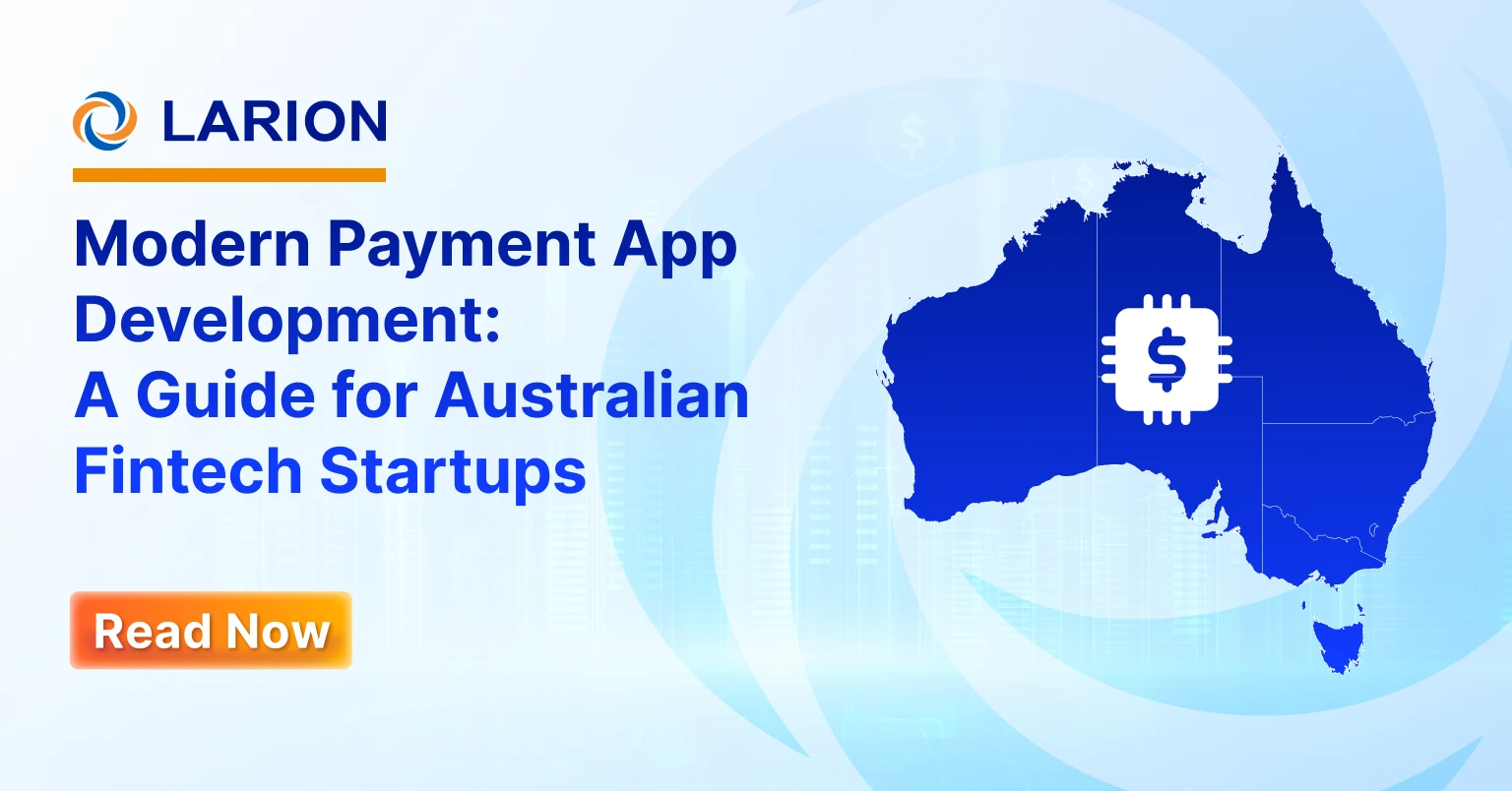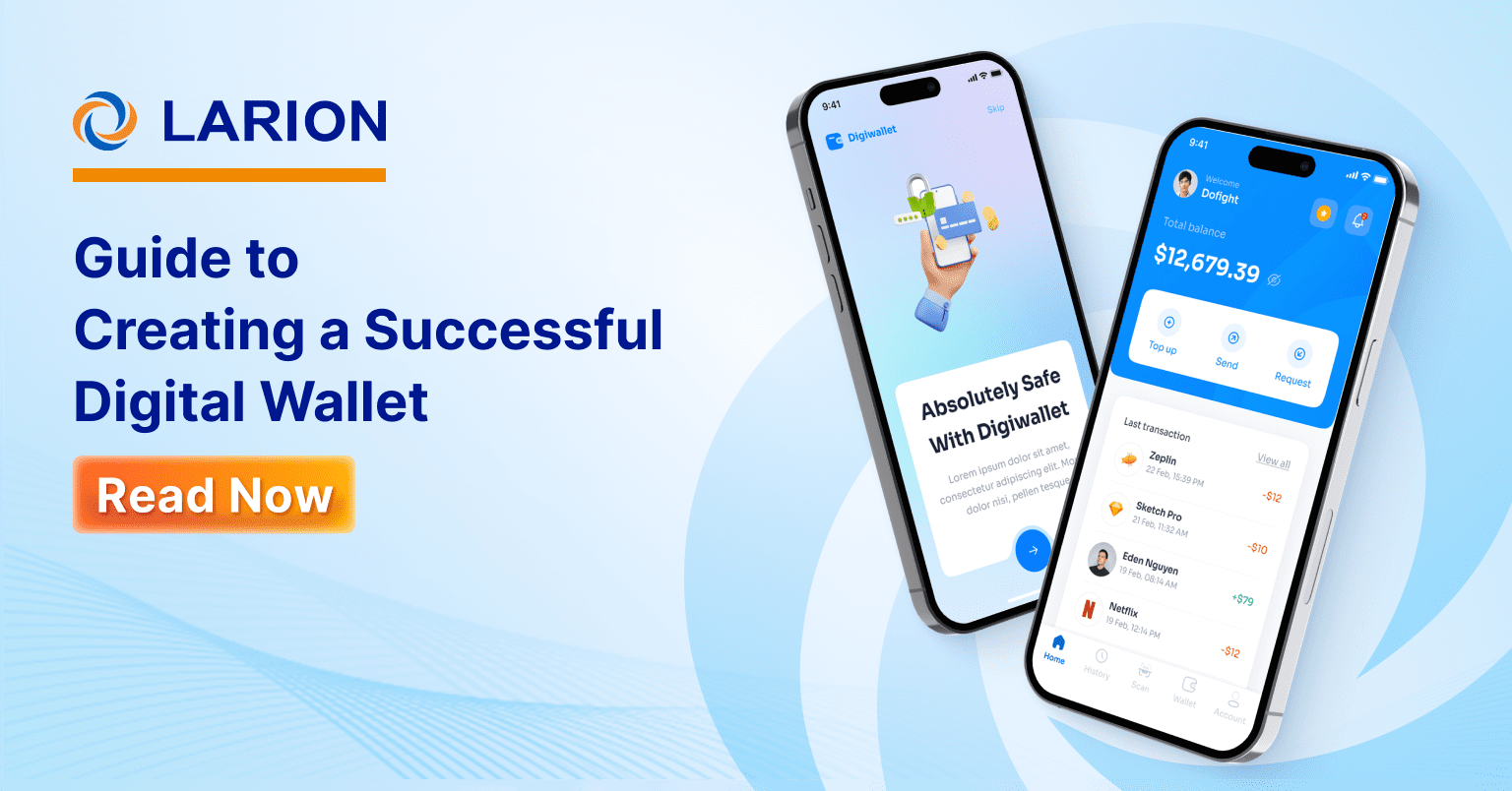In today’s fast-paced digital world, convenience is always put on the top priority, and the visually evident is the rise of mobile banking apps. From checking balances and transferring funds to applying for loans or paying bills, users now expect secure and user-friendly banking experiences right at their fingertips. As financial institutions compete to stay relevant in an increasingly mobile-first economy, developing a powerful mobile banking app is no longer a luxury, it’s a necessity.
In this blog, we’ll explore everything you need to know about mobile banking app development process, from understanding its core functions and benefits to the development process, security concerns, and the latest industry trends. Whether you’re a tech decision-maker at a financial institution or an entrepreneur that is looking to enter the fintech space, this guide is your roadmap to building a successful, secure, and user-friendly mobile banking app.
What is a Mobile Banking App?
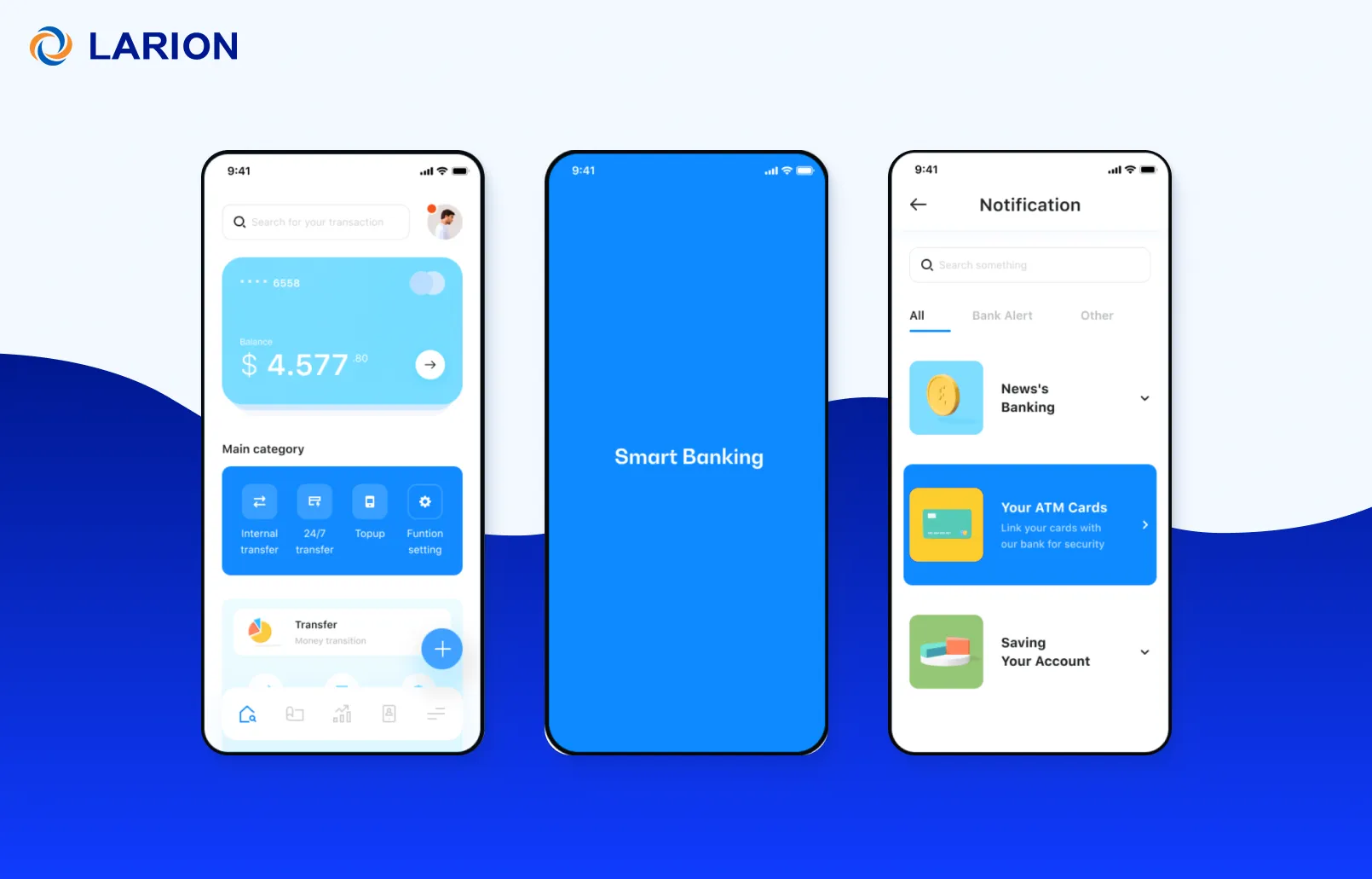
A mobile banking app is a digital platform that allows users to manage their bank accounts and perform various financial tasks, such as transferring funds, checking balances, and paying bills, directly from their smartphones or tablets. To begin using the service, users simply download the bank’s official app from App Store or Google Play and create a secure user profile. Once the app is installed and set up, it provides convenient, on-the-go access to a wide range of banking services, which eliminates the need to visit a physical branch.
Benefits of Mobile Banking App Development
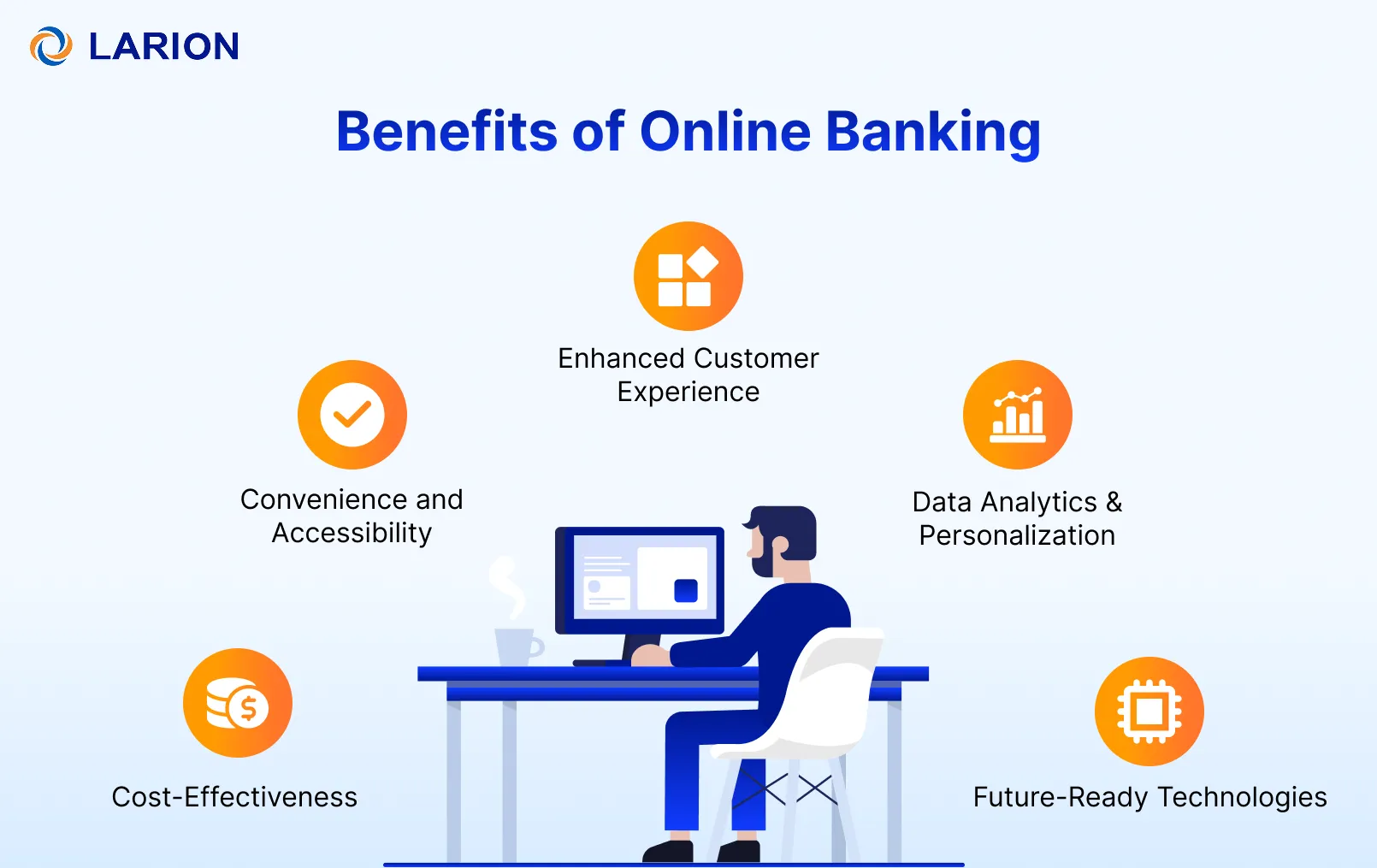
There are a lot of benefits when you decide to develop your mobile banking app, but in this section, we’ll only focus on key advantages that mobile banking apps bring to businesses and their customers, from convenience and enhanced user experience to modern technologies that position financial institutions for sustained success.
Convenience and Accessibility
With the rise of mobile banking, users no longer need to visit the bank in person. The mobile app gives them the ability to complete transactions anytime, anywhere.
A key feature is 24/7 support, especially with the support of AI-powered chatbots, users can access help whenever needed. Additionally, voice-activated banking allows users to make payments with simple voice commands, which offers convenience for multitaskers or when typing isn’t ideal.
Cost-Effectiveness for Businesses
Developing a mobile banking app reduces the need for physical branches and paper-based processes, which help you save operational cost savings. Advanced features like AI chatbots also reduce customer service costs for you by allowing users to get assistance without human intervention.
Moreover, your business also benefits from automation, improved process efficiency, and the ability to add security features like multi-factor authentication to build trust. Over time, these improvements lead to a strong return on investment (ROI).
Enhanced Customer Experience
Mobile banking apps help your business stand out by providing high-quality services. Features like peer-to-peer (P2P) payments enable instant transfers, which eliminates the reliance on manual processes. Moreover, geolocation APIs help customers find nearby ATMs and branches, reducing service inquiries.
On the other hand, Omnichannel banking ensures customer service across devices, increasing satisfaction and engagement. By investing in these tools, you can reduce costs and increase revenue.
Data Analytics & Personalization
Banking apps utilize customer analytics to provide personalized services. By analyzing user behavior, apps can offer tailored discounts and promotions, which help create experiences that fit individual needs.
Furthermore, easy access to transaction history helps users track spending, set budgets, and make smarter financial decisions, which change data into valuable insights for both customers and banks.
Future-Ready Technologies
With the growing popularity of cryptocurrency, blockchain banking apps are becoming popular. These apps allow users to manage digital currencies easily and ensure that banks stay relevant as financial technology evolves.
However, security remains a top priority. You should integrate multi-factor authentication to safeguard transactions and protect user data, which helps your business stay ahead by providing secure solutions.
Types of Mobile Banking Apps

Banking apps can be categorized in various ways, but in this article, we’ll focus on classifying them by features and functionality, from basic to advanced levels.
Basic Level Mobile Banking Apps
These apps provide essential banking functions such as checking account balances, transferring money, and viewing transaction history. Users can manage their finances on the go, with features like customer data analytics to track spending habits and monitor budgets. Additionally, these apps often include ATM and branch locators for convenience.
Intermediate Level Mobile Banking Apps
Inherit all basic features, these intermediate apps offer tools like in-app messaging and financial account connections. A key feature is KYC (Know Your Customer), which helps verify user identities during login. Users also receive in-app notifications to stay updated on account activities and manage their finances more effectively.
Advanced Level Mobile Banking Apps
At the advanced level, mobile banking apps offer interesting functions like stock trading and investment management. These apps also provide custom banking solutions for businesses, integrating specific tools to meet unique operational needs. For security, they use advanced biometric authentication to enhance protection for user accounts and transactions.
Key Features of Mobile Banking Apps
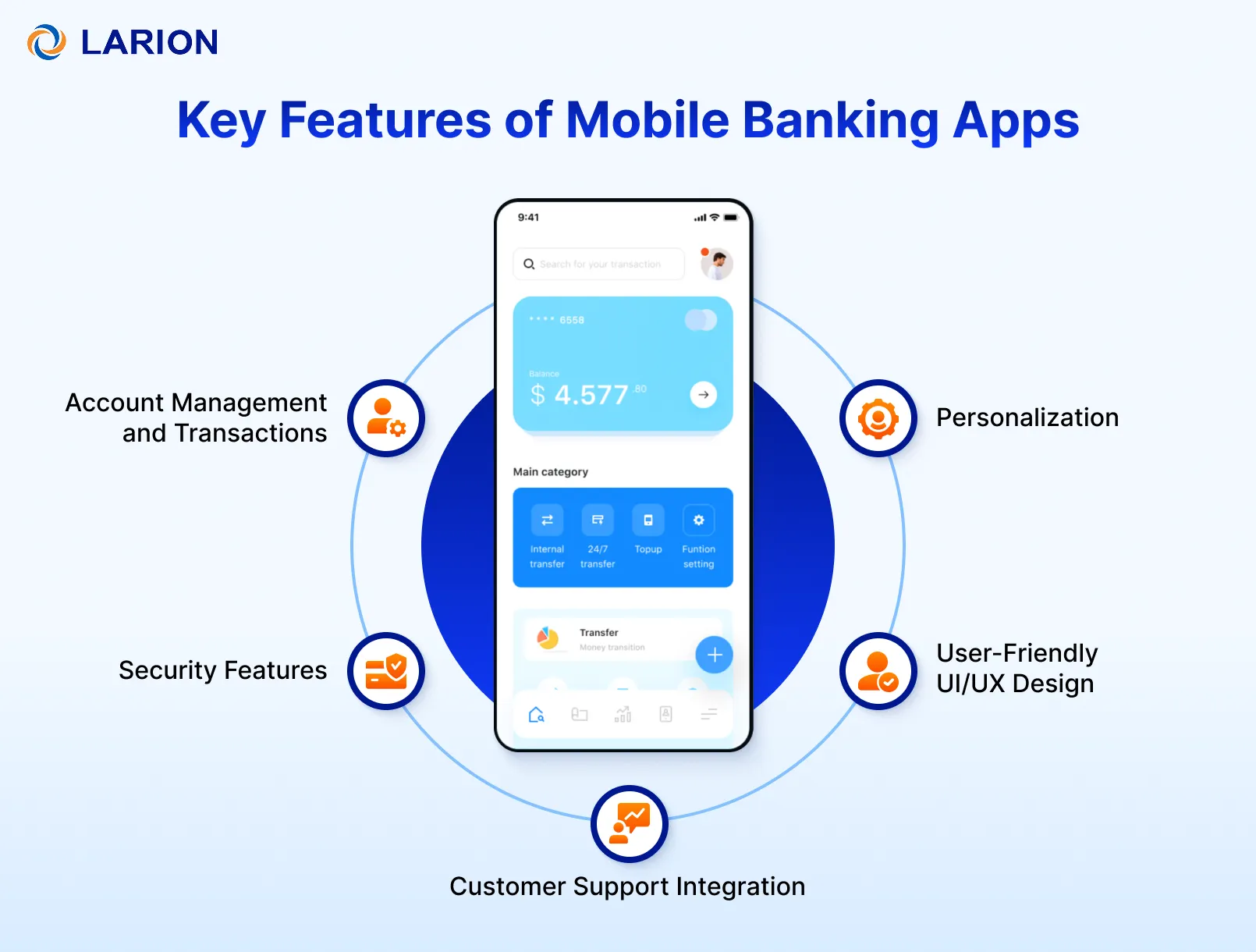
A great mobile banking app must be secure, easy to use, and fit to user needs. To meet customer expectations and stay competitive, your app should offer core features like account management, secure transactions, and responsive customer support. Personalization and a user-friendly design also play a big role in keeping users engaged and satisfied. In this section, we’ll explore the key features that every successful mobile banking app should include.
Account Management and Transactions
Mobile banking apps simplify account management by allowing users to easily check balances, transfer funds, and set up automatic payments. The transaction history feature helps users quickly view and search past transactions.
Security Features
Security is the first priority in mobile banking apps. For example, biometric authentication features ensure only authorized users can access the app, while two-factor authentication (2FA) provides extra protection for logins and transactions. Additional security measures like end-to-end encryption and secure APIs help protect against hacking and maintain data privacy.
Customer Support Integration
In-app chatbots and AI-powered assistants offer real-time support, which improves the user experience by providing quick help. This feature benefits both customers and your business, they receive instant support while you save the human resources for customer support service.
Personalization
Mobile banking apps offer personalized experiences with features like push notifications for account updates, reminders, and promotions. Gamification encourages users to save or invest by rewarding them for reaching financial goals. Furthermore, integration with wearable devices enables users to access banking services from their smartwatches or fitness trackers.
User-Friendly UI/UX Design
An user-friendly design is key to a smooth banking experience. Mobile banking apps are developed with easy-to-navigate interfaces, clear layouts, and fast performance. It ensures users can access features quickly and complete transactions without delays.
Mobile Banking App Development Process: Step – by – step
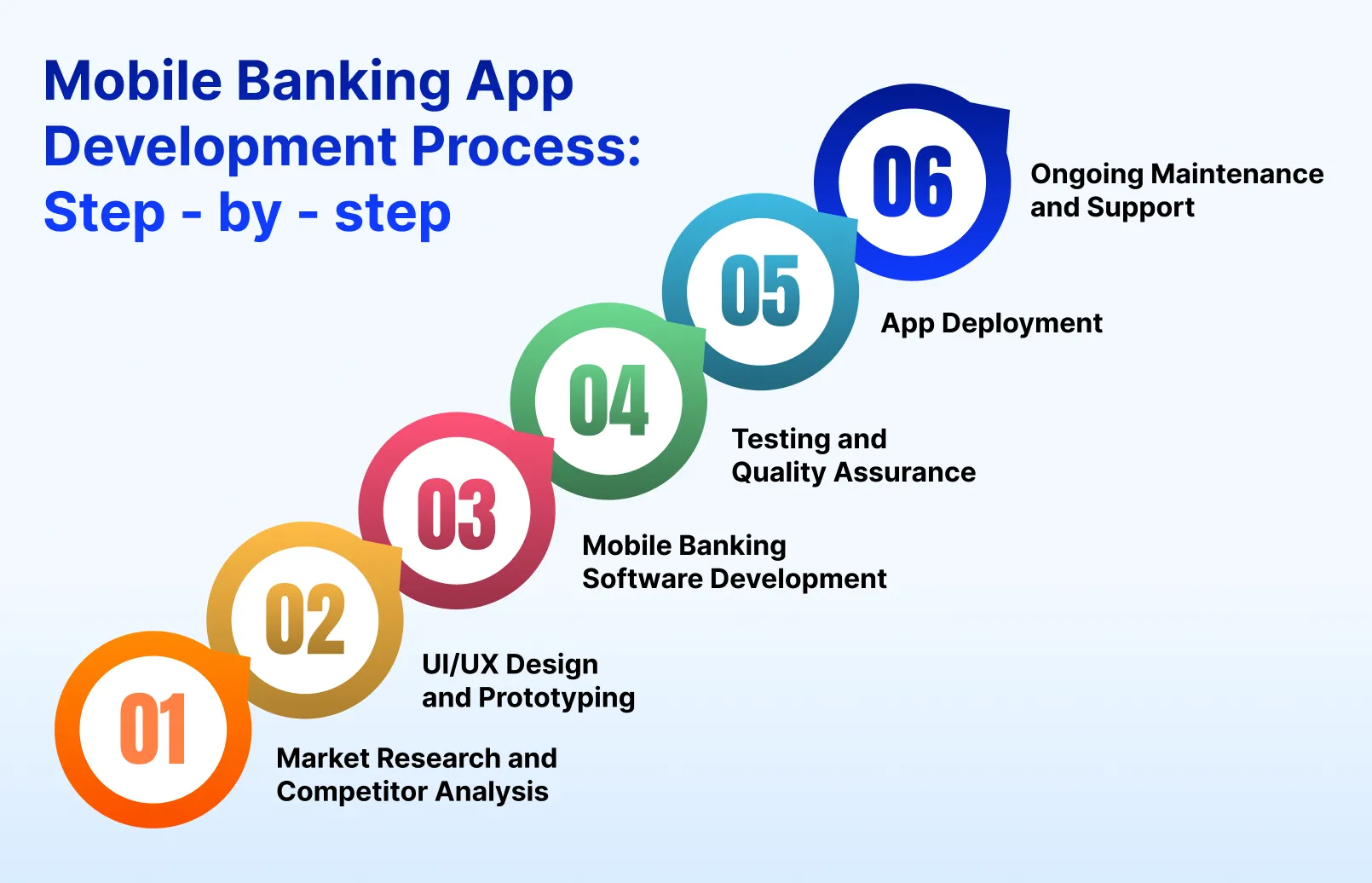
Building and maintaining a successful mobile banking app requires careful planning, execution, and continuous improvement to meet user needs and stay ahead in the competitive financial sector. Below are 6 steps you can refer:
1. Market Research and Competitor Analysis
- Identify Target Users: Understand your users’ demographics, financial habits, and needs.
- Market Trends & Requirements: Stay updated with financial trends, like cryptocurrency integration, virtual credit cards, digital installments, or AI-driven fraud detection.
- Cultural Insights: Consider regional preferences and regulatory impacts on your app’s design.
- Competitor Analysis: Study your competitors’ apps to identify features that can help your app stand out.
2. UI/UX Design and Prototyping
- Wireframe Creation: Start with wireframes to map out the app layout, focusing on key screens like the login page, dashboard, user management and transaction history…
- User-Centered Design: Ensure an user-friendly design to build trust and minimize user errors.
- Security Features: Integrate biometric authentication and SSL encryption to enhance trust.
- Prototype Development: Create interactive prototypes and gather user feedback to refine the app.
3. Mobile Banking Software Development
- Native, Hybrid or Cross-platform Development: Choose native development for more security and performance, while hybrid and cross-platform development helps you save cost.
- Backend Integration: Integrate secure APIs for banking systems and third-party tools, and set up scalable databases.
- Tech Stack: Determine technologies for your mobile banking app like Swift, Kotlin, or React Native, depending on your mobile banking app development approaches.
4. Testing and Quality Assurance
- Unit Testing: Test individual components like login, sign up, KYC, account management and more…
- Integration Testing: Ensure continuous functioning between the front-end, back-end, and APIs.
- Performance & Security Testing: Guarantee the app performs well under various loads and fix vulnerabilities through penetration testing.
- User Testing: Collect real-user feedback to improve the app’s flow and functionality.
5. App Deployment
- App Store Submission: Submit your app to Google Play and the Apple App Store with optimized metadata.
- App Store Optimization (ASO): Use compelling titles, descriptions, and visuals to boost visibility and downloads.
- Marketing: Promote your app through social media, email campaigns, and in-app ads.
6. Ongoing Maintenance and Support
- Monitor Feedback: Respond to user reviews and address issues promptly.
- Security Updates: Regularly update the app to stay compliant with financial regulations like GDPR and PCI-DSS.
- Feature Updates: Keep the app competitive by studying and adding new features to make your banking mobile app stand out.
Challenges in Mobile Banking App Development
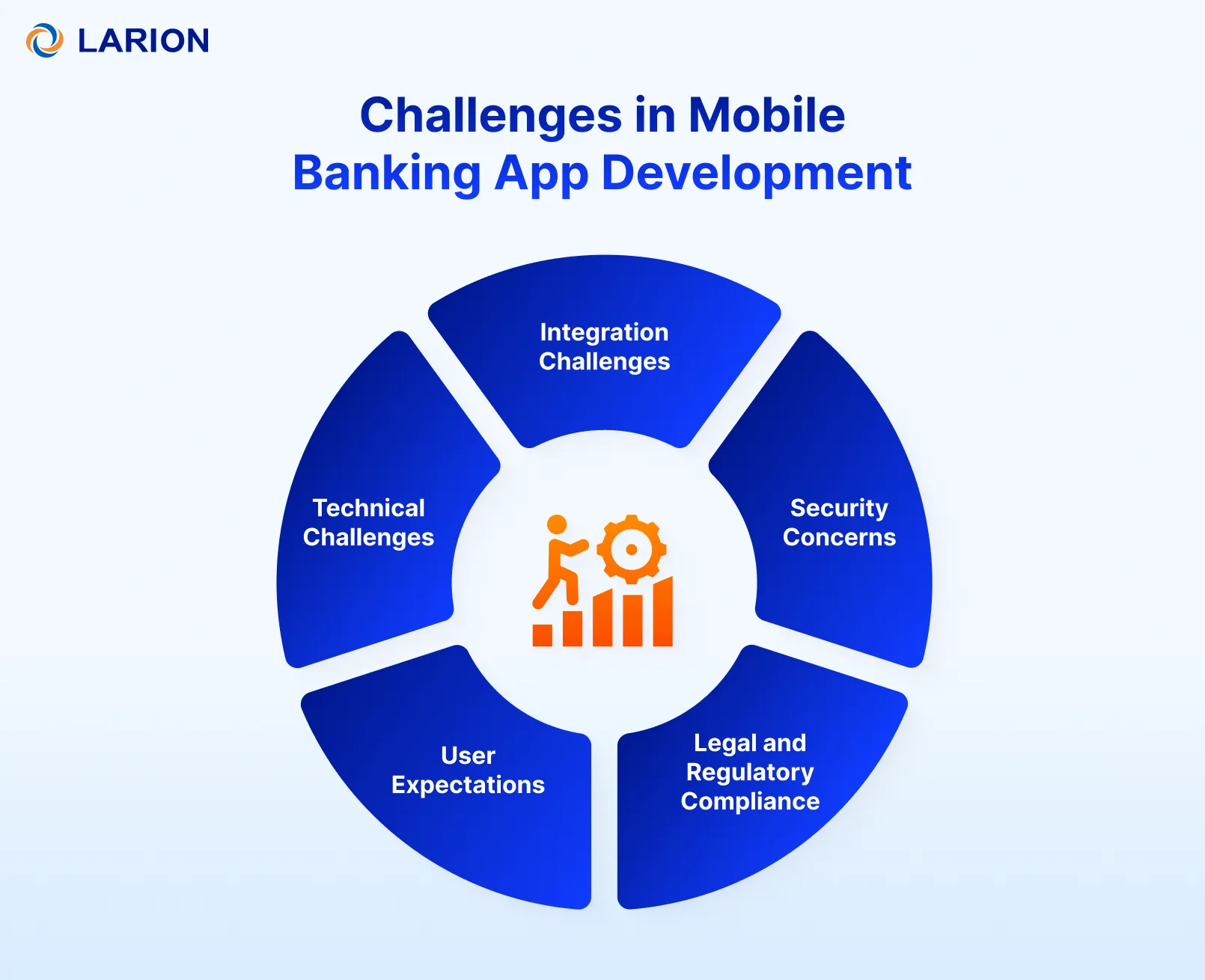
1. Integration Challenges
Sometimes, linking your banking app to third-party services like payment gateways and financial data providers can be complex. Open banking APIs are often used for managing and sharing data, but each service has its own requirements. They make integration difficult and potentially lead to fragmented systems or downtime. Standardized open APIs can help, but careful planning and continuous updates are crucial.
2. Technical Challenges
- Smooth Development Process: Maintaining a mobile banking app development process can be tough, but you can apply CI/CD (Continuous Integration/Continuous Deployment) to streamline workflows by enabling rapid updates, bug fixes, and thorough testing without disrupting the app’s performance.
- Native, Hybrid and Cross-Platform Development: Choosing between native, Hybrid and Cross-platform development affects app performance and scalability. Native apps offer optimal performance and full device feature access, ideal for security-heavy apps, while hybrid and cross-platform frameworks are more cost-effective and faster to build, but with some performance trade-offs.
3. Security Concerns
Data breaches can have severe consequences such as exposing sensitive information and damaging trust. Therefore, strong encryption and secure API connections is a must to protect user data. You can also apply regulations like GDPR, KYC, and AML to ensure responsible data handling and reduce the risk of financial crimes, safeguarding both your app and users.
4. User Expectations
Users constantly expect new features, better security, and smooth usability. To balance these expectations while maintaining an intuitive user interface and ensuring accessibility is a challenge. You must also update your app regularly to stay competitive and reach more users.
5. Legal and Regulatory Compliance
Compliance with local and global regulations such as KYC, AML, and GDPR is critical to avoid legal penalties and build trust with users. Let’s ensure that your app meets these standards to strengthen your reputation and increase user engagement.
Security and Compliance in Building Mobile Banking Apps
Security and trust are key to any mobile banking app. To protect users and meet legal standards, your mobile banking app must follow compliance regulations, use strong security protocols, and apply AI to detect fraud. Meanwhile, keeping customer data private and offering good support helps build user trust. Below are the essentials for keeping your app safe, legal, and user-friendly.
Compliance Regulations
To build a secure mobile banking app, complying with compliance regulations is essential. You should follow frameworks like PSD2, GDPR, and KYC/AML to protect user data and ensure secure account management. Compliance not only safeguards sensitive information but also fosters user loyalty, as customers trust companies that follow the law. This is crucial for any mobile banking app development process.
Security Protocols
Security should always be the top priority in mobile banking app development. Implement these key protocols to keep your app secure:
Biometric User Authentication: Fingerprints and facial recognition provide quick, secure logins.
End-to-End Encryption: Protects sensitive data during transactions and storage, ensuring privacy and security for all users.
Two-Factor Authentication: Adding a second verification step enhances protection against fraud.
AI-Powered Fraud Detection
Integrating AI-driven fraud detection algorithms into your mobile banking app development can help monitor suspicious transactions in real-time. Meanwhile, machine learning helps identify patterns and proactively prevents fraud to give users more protection. These features are becoming vital in mobile banking trends and setting new standards for app security.
Data Privacy and Customer Trust
To build trust, you must ensure that user data is protected from breaches and sensitive information is securely stored. Besides, to enhance the user experience, let’s follow data privacy regulations while offering personalized features such as push notifications, wearable integrations, and gamification. This focus on privacy and personalization will help you stay competitive in the mobile banking app development landscape.
User Experience and Support
A user-friendly UI/UX design ensures that account management is smooth and intuitive. Companies that specialize in mobile banking app development, need to create apps that are easy to navigate, with clear icons and well-organized sections. Additionally, offering responsive customer support, like in-app chat and email support, helps users resolve issues quickly, improving both satisfaction and trust.
Cost of Developing a Mobile Banking Application
The cost of mobile banking app development typically ranges from $90,000 to $300,000 or more, but this cost can vary depending on several factors. Below is a breakdown of the key elements that influence the cost of mobile banking app development:
Factors Influencing Mobile Banking App Development Cost
- Development Complexity: Simple banking apps with basic features are more affordable, but adding advanced functionalities like big data analytics, cryptocurrency integration, and AI chatbots increases the cost. These features require additional resources and expertise in banking app development.
- App Development Platform Choice:
- Native app development delivers better performance but at a higher cost.
- Hybrid and cross-platform apps are cost-effective and scalable, but they may not perform as optimally, which is an important consideration in mobile banking app development trends.
- Team Expertise: Skilled developers specializing in mobile banking app development may charge more, but their expertise ensures perfect integration with backend systems and APIs, which help reduce the risk of delays or issues.
- Backend Infrastructure: Secure backend systems are essential for managing transactions, data storage, and payment gateways. Implementing top-tier security measures is the key to protect sensitive banking data, but it will increase the overall cost.
Ongoing Costs
After the app is launched, you’ll need to plan for ongoing costs to ensure it runs smoothly:
- Maintenance: Regular updates for bug fixes, performance improvements, and compatibility with new devices are necessary.
- Security Measures: Routine audits and updates are vital for maintaining user trust and preventing breaches.
- Payment Gateways and APIs: They ensure that transactions and functions work stably within the mobile banking app, but they also contribute to recurring costs.
Cost-Effective Development Strategies
If you want to reduce the cost for your mobile banking app development, you can consider outsourcing to a trusted company that can help you manage costs while maintaining high-quality results. Furthermore, by partnering with experienced developers who specialize in mobile banking app development, you will receive the best consultation for your app.
Additional Considerations
- Technology Stack: Advanced tools like cloud services, security protocols, and APIs enhance the app’s functionality but can increase the costs. These technologies are essential for scalability and long-term success.
- User Experience: Adding advanced features such as personalized dashboards and gamified savings boosts engagement for your app, but it will increase development costs. However, these features provide significant value and are crucial to staying competitive in mobile banking app development trends.
Mobile Banking App Development Trends
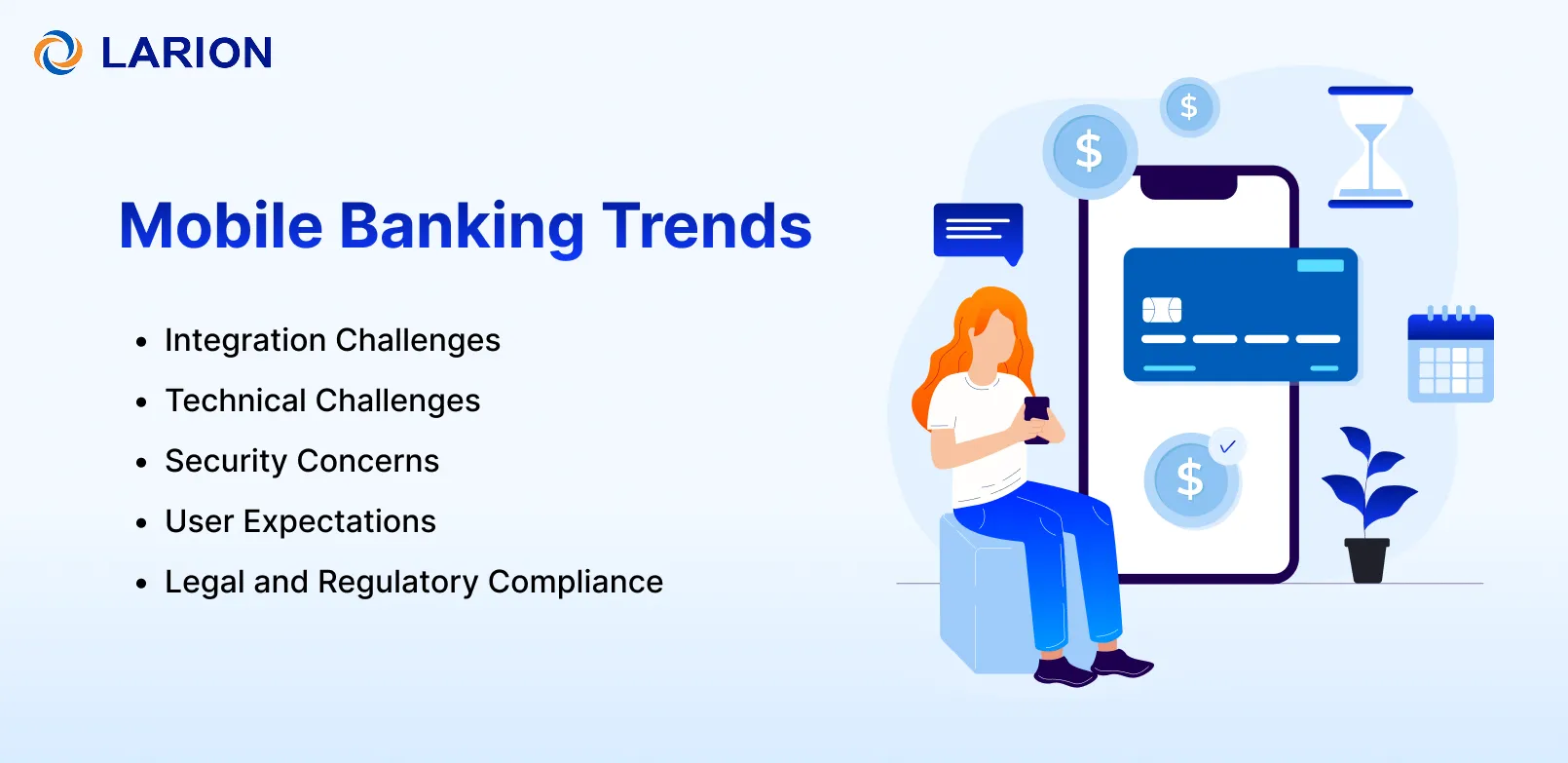
To stay competitive in banking application development, you should follow emerging mobile banking app development trends. Here are some of the most impactful trends to consider:
Artificial Intelligence (AI) and Machine Learning (ML)
- AI-Driven Fraud Detection: AI monitors real-time transactions, detecting suspicious activities and preventing unauthorized actions, which enhances security in mobile banking app development.
- AI-Powered Chatbots: These chatbots provide 24/7 support, answering queries, resolving issues, and optimizing operations to boost user engagement while reducing customer service costs.
- Machine Learning: ML analyzes user behavior and offers personalized financial insights, predictive analytics, and tailored advice, which help users make smarter financial decisions.
Blockchain and Cryptocurrency
- Crypto Integration: Blockchain ensures transparency in handling digital currency transactions. It allows users to confidently explore modern financial options in mobile banking app.
- Digital Wallet Integration: The combination of cryptocurrency management and traditional banking simplifies access and management of digital currencies in one solution.
Open Banking and Neobanks
- Open Banking Innovations: Standardized APIs allow users to connect with third-party financial services, which offer access to customized solutions within mobile banking app.
- Neobank App Development: Focus on user experience with features like seamless onboarding, user-friendly interfaces, and integrated payment systems.
Wearables and IoT Integration
- Wearables Integration: Smartwatches and fitness trackers enable users to check balances, receive transaction alerts, and make payments. It makes banking more accessible in mobile.
- IoT Integration: Linking apps with IoT devices improve automated transactions, budgeting, and personalized financial management for a seamless experience.
Enhanced Security Measures
- Biometric Security: Fingerprint and facial recognition authentication provide secure, quick access to accounts in mobile banking trends.
- Enhanced Cybersecurity: Apps now use encryption techniques and advanced fraud prevention methods to safeguard sensitive information and build trust with users.
By integrating modern technologies and security measures into your mobile banking app development, you can create a competitive, secure, and user-friendly mobile banking experience that meets the demands of today’s users. Working with an experienced banking app development company will help you navigate these trends and ensure your app stays ahead of the competition.
Conclusion
Mobile banking apps are changing the way people manage their money. From simple features like checking balances to advanced tools like investment tracking and biometric security, these apps offer users convenience, speed, and control.
To build a successful mobile banking app, you need more than just a good design. It’s important to focus on security, user experience, and future trends to stay competitive in the market.
If you’re thinking about developing a mobile banking app, now is the perfect time to start. Let’s get in touch with us! We’re here to help you create a secure and user-friendly banking app that meets your goals.
